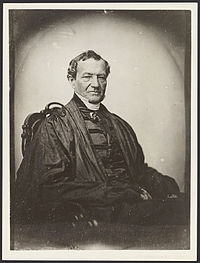Post Author: Bill Pratt
Although the author did not record his name within the text itself (a common practice in the ancient world), the first book found in the New Testament (NT) has historically been attributed to the writing of Matthew, a tax collector and one of the twelve disciples of Jesus. Although some NT scholars doubt the authorship of Matthew, there are good reasons to believe that he was, indeed, the author of the first gospel.
There are at least two lines of evidence that can be rallied to the defense of Matthew: (1) the superscription of the ancient manuscripts and (2) the patristic witness.
A superscription is text added to an ancient manuscript by a scribe for purposes of identification; it acts as a title. According to NT scholar D. Edmond Hiebert, the first gospel’s “identifying superscription, ‘The Gospel According to Matthew,’ is the oldest known witness concerning its authorship.” Scholars believe the superscription was added as early as A.D. 125 and the “superscription is found on all known manuscripts of this gospel.” This fact is a powerful testimony to the uniformity of evidence with regard to the authorship of Matthew.
The second line of evidence is the patristic witness. The early church fathers were unanimous in crediting the gospel to Matthew. Hiebert claims, “The earliest is the testimony of Papias, bishop of Hierapolis, dating to the first half of the second century.”
Following Papias is Irenaeus “who wrote his famous Against Heresies around A.D. 185.”
The next church father to attribute authorship to Matthew is Origen, who wrote in the early third century. He is quoted by Eusebius, who wrote in the early fourth century.
Finally, Eusebius himself, in the early fourth century, documents that Matthew wrote the first gospel.
There is an unbroken witness to Matthew as the author of the first gospel going back to at least the middle of the second century, and there is no contradictory witness found in any of the church fathers.
Due to the fragmentary nature of documentary evidence in the ancient world, our ability to trace back authorship to within 100 years of the original writing of the first Gospel is exceptional. Surely this presents a persuasive case for Matthean authorship.
